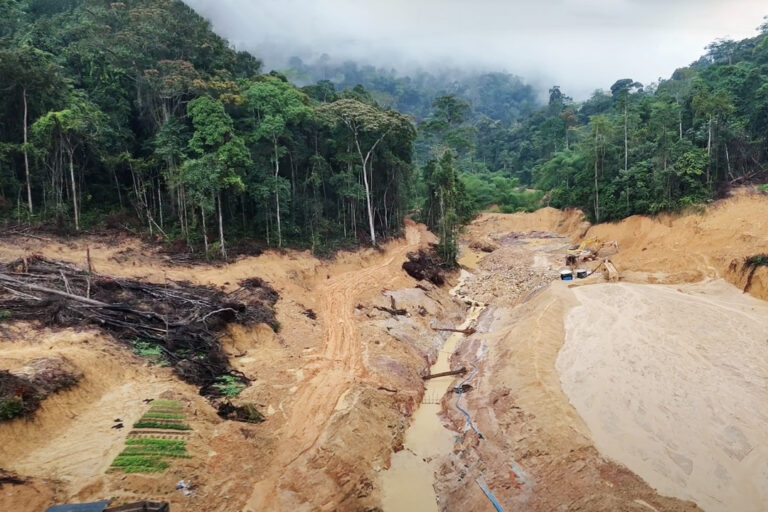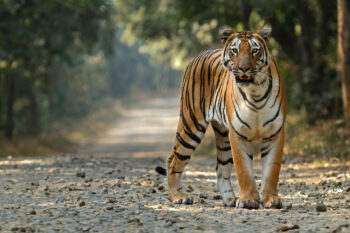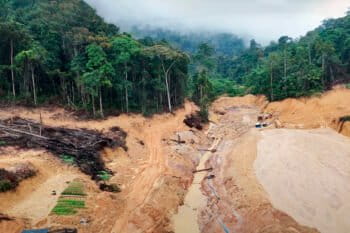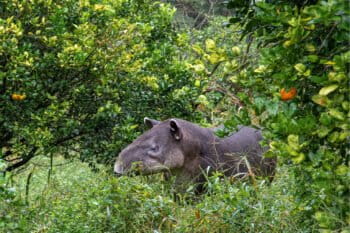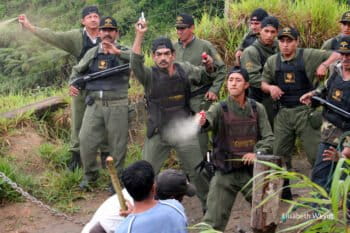YAOUNDE – In Cameroon, home to one of the largest forest massif in Africa, the production of charcoal is a growing threat to the environment.
To combat this, Steve Djeutchou transforms organic waste, such as banana peels, into ecological charcoal, or biochar. Thanks to his local network of suppliers, Steve estimates that the potential biomass to be collected in Yaoundé is around 40 metric tons a day.
Steve produces around 3 tons of biochar a month, but this is still not enough to have a significant impact, given the lack of resources to scale up. Cameroon has one of the largest forest area in Africa, but between 2002 and 2020, the country lost more than 700,000 hectares of forest, according to Global Forest Watch.
The 30-year-old engineer has also launched his own training school specializing in renewable energy.
Mongabay’s Video Team wants to cover questions and topics that matter to you. Are there any inspiring people, urgent issues, or local stories that you’d like us to cover? We want to hear from you. Be a part of our reporting process—get in touch with us here!
Banner image: Thomas Diego Badia
Transcript
Notice: Transcripts are machine and human generated and lightly edited for accuracy. They may contain errors.In this neighborhood in the south of Yaoundé…
Cindy is preparing lunch for her two children. To cook, she burns a special type of charcoal made from organic waste.
I saw that this charcoal was good, and I liked it. It is more durable, and a kilogram of it is not expensive. A kilogram costs 250 francs, while the other costs 500 francs.
At less than half the price of charcoal, the fuel Cindy uses also produces less smoke.
It’s good not to breathe too much smoke.
Behind this solution is environmental engineer Steve Djeutchou, who decided to tackle one of the key causes of deforestation in his country: cutting of trees to produce charcoal, of which 375,000 metric tons are burned per year.
The 30-year-old Cameroonian launched a sustainable biocharl business in 2020.
Today we need one ton of waste, about 10 bags!
Today, Steve goes to a snack factory in Yaoundé to collect banana peels.
Oh boss!
Hello boss!
Thanks to his local network of suppliers, Steve estimates that the potential biomass to be collected in Yaoundé is around 40 metric tons a day.
Steve doesn’t pay for the banana peels; he takes care of the transport and the collection bags.
We collect waste three times a week. After drying, each ton gets reduced by a third. This means that the 3 tons we collect result in just 1 ton after drying.
A few kilometers away, in this open-air workshop, the process of making biochar begins in these carbonizers, which Steve designed himself in 2021.
When the waste is carbonized, it takes this form, as you can see. After shredding, we move on to sieving. We sieve to ensure we have a very fine substance, and once it’s sieved, we use this stabilizing liquid, which can be made from clay or starch.
After that, we use compactors. There are several types of compactors, with different shapes, as you can see. Here, we have circular shapes adapted to an improved fireplace style, and here we have square shapes.
And this is what the charcoal looks like once unmolded and ready to use!
Steve produces around 3 tons of biochar a month, but this is still not enough to have a significant impact, given the lack of resources to scale up. Cameroon has one of the largest forest area in Africa, but between 2002 and 2020, the country lost more than 700,000 hectares of forest, according to Global Forest Watch
If we manage to provide a palliative solution for charcoal or firewood, it means that we have solved a real problem related to deforestation.
And in the face of the climate emergency, the entrepreneur has no intention of limiting himself to biochar.
Change of outfit: Today, Steve teaches courses in waste recovery. These attentive faces belong to the new intake at his training school.
Today, we’re going to talk about biomass and waste recovery. I think we did the introduction last time, and we’ll also discuss producing charcoal from household waste.
In the classroom next door…
222 Volts
Practical electronics work for Horlane, one of 400 people trained by Steve’s organization over the past four years.
They teach us how to assemble things in homes and how to wire things.
At the end of this course, I’ll be able to bring order to my neighborhood or my village.
I think that’s very important for the future.
These training courses are Steve’s way of developing local skills in the renewable energy sector.
All renewable energies are solutions for mitigating the effects of climate change. So what better way than to add training to strengthen human resources, to bring in people who believe in the vision, people who share the vision, which is to live in a healthy environment and to industrialize Africa in general, and Cameroon in particular.
There are an estimated 320,000 jobs in renewable energies across Africa. On a global scale, this represents less than 2.4% of the jobs created in the sector. While we wait for a large-scale surge, Steve is gradually laying the foundations for change.






